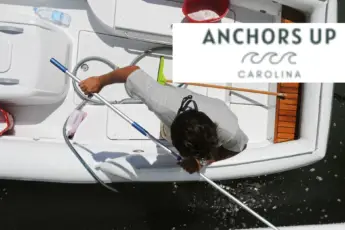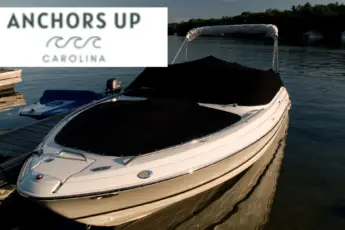When you spend time on the water regularly without question, you are bound to encounter poor weather. As an avid boater and former captain, I have encountered severe thunderstorms and stiff winds. While ultimately, it is best to be back at the dock when inclement weather strikes, it is not always possible. So when you are boating on a lake and the weather turns bad, what should you do first?
Avoid Bad Weather
When you are boating on a lake and the weather turns bad, what should you do first? Avoid putting yourself in this situation altogether.
Without question avoidance is certainly possible by monitoring weather stations before planning a day on the water. Tune into the local weather on the morning of a scheduled boat day. When the weather station calls for high winds and likely chances of thunderstorms, stay home. Conversely, if winds are light and rain percentages are low, head out on the water.
It should be noted that you can always find another day to get out on the boat. Don’t put yourself, your friends, and your family at risk. Nonetheless, unexpected weather does occur.
What To Do When Bad Weather Approaches While Boating
When the weather turns bad while boating, here is what you should do to return safely to the dock. Importantly poor weather is wind, thunderstorms, fog, or a combination.
Turn On Your Navigation Lights
Never assume that you’re the only boater on the water needing to return back to the dock with the onset of rain, thunderstorms, or fog.
Undoubtedly turn on your navigation lights under these conditions to allow boaters in the vicinity to spot you more easily. Collisions occur, and illuminating lights will reduce the chances.
Reduce Your Speed
I personally want to get to dry land with the onset of poor weather. However, racing back to the dock will likely put you in greater danger.
Racing in stiff winds increases the chances of capsizing or falling overboard in rough seas. Low visibility puts you at risk of colliding with boats or objects. Of course, maintain enough speed to remain on course but never race.
Wear A Life Jacket
Unfortunately, boaters are killed yearly, but wearing a life jacket will increase your chances of survival.
It should be noted that life jackets are best worn at all time. However, the vast majority of boaters do not wear a life jacket when on the water. As weather conditions deteriorate put on a life jacket in the event you end up in the water.
Monitor The Bilge Pump
No matter if you’re encountering heavy rain or rough seas bilge pumps are fundamental in keeping the boat stable. Importantly, watercraft capsize as a result of imbalance primarily from the accumulation of water. Boat scuppers will only channel a limited amount of water off the deck.
In situations of water intrusion from waves or wind, monitor the bilge pump. Ensure that water is being pumped overboard. Bilges filled with water lead to disastrous circumstances. I have had a bilge pump go bad in heavy rains. With that being said on the fly I was required to change out the bilge pump to prevent the boat from sinking. Fortunately, I had a spare on hand.
Head To Shore
With the onset of severe weather head to shore. Remember, you may find an alternative place to dock compared to your home port. Public places like parks and restaurants may be suitable until the storm passes. However, in the process of returning to shore, do not become panicky and rush as you put yourself at greater risk.
With all of my time spent on the water, I have needed to find alternative dockage. In one particular situation I heard of an approaching storm on the VHF radio. Instead of returning to my home port, I docked at a neighboring marina.
Approach Waves At A 45 Degree Angle
Understanding how to approach steep waves is critical when navigating in seas build. All too often, inexperienced boaters drive straight on and roll the watercraft over.
When navigating high seas, always approach the wave at a 45-degree angle. A 45 degree angle will prevent the boat from flipping over backwards. Boaters navigating inlets most often encounter steeply angled waves. Always use a 45 degree approach when waves are stacked transiting inlets.
Apply These Safety Measures When Boating In Bad Weather
To answer the questions when you are boating on a lake and the weather turns bad, what should you do first? Put on your life jacket. A life jacket is critical in the event you or your passengers end up in the water. In addition to wearing a life jacket, keep the other tips on the top of your head to navigate safely back to the dock.







